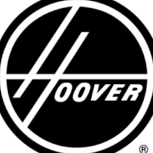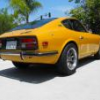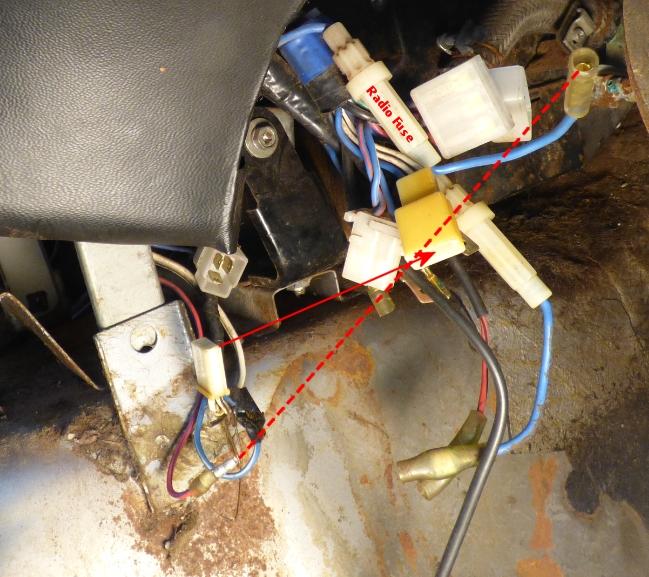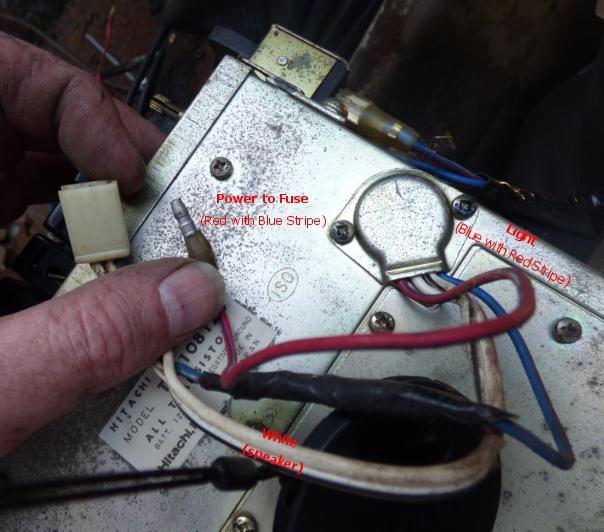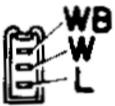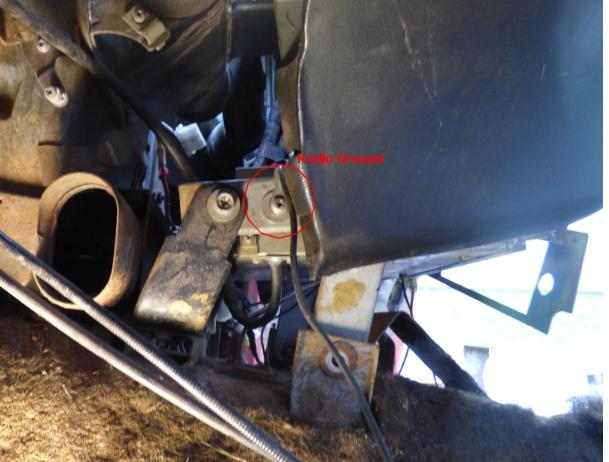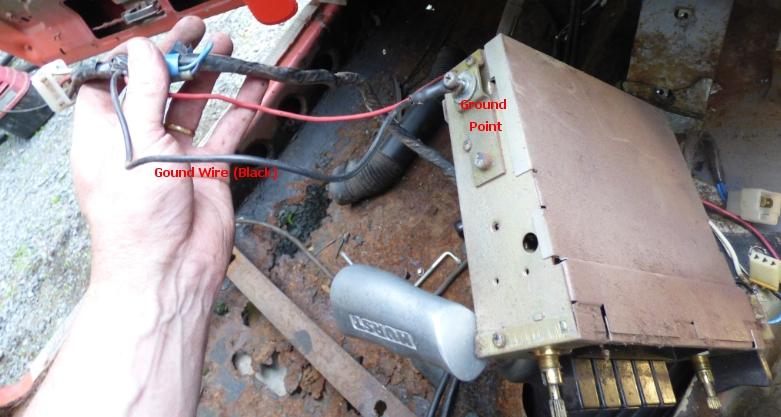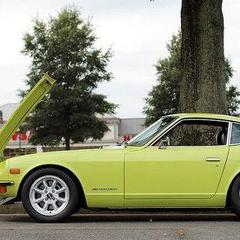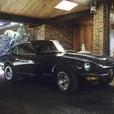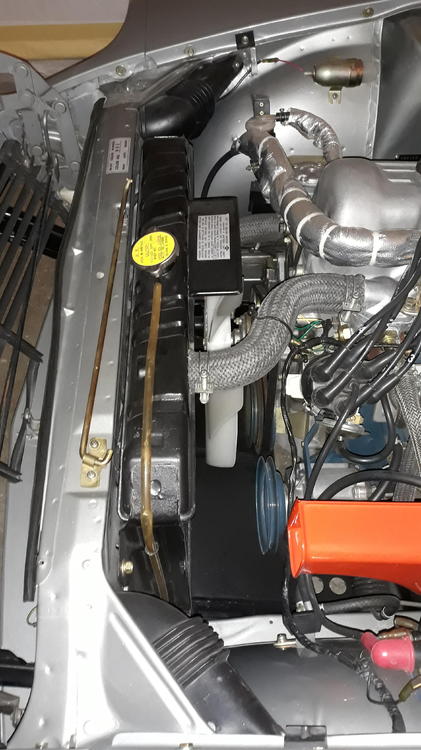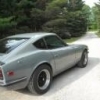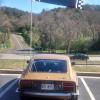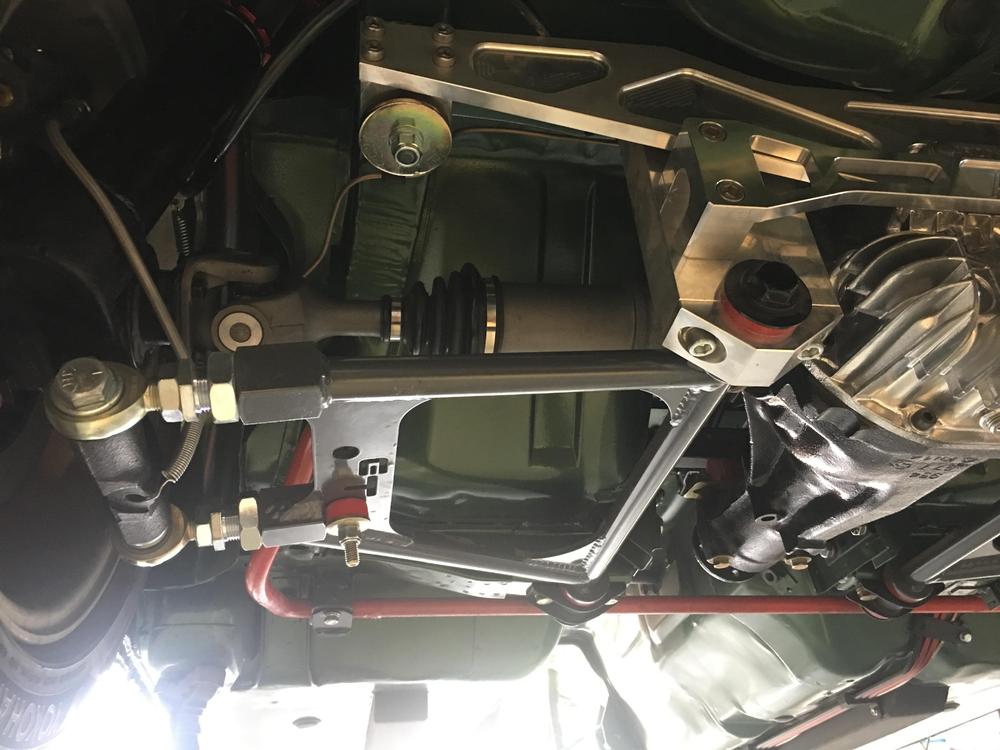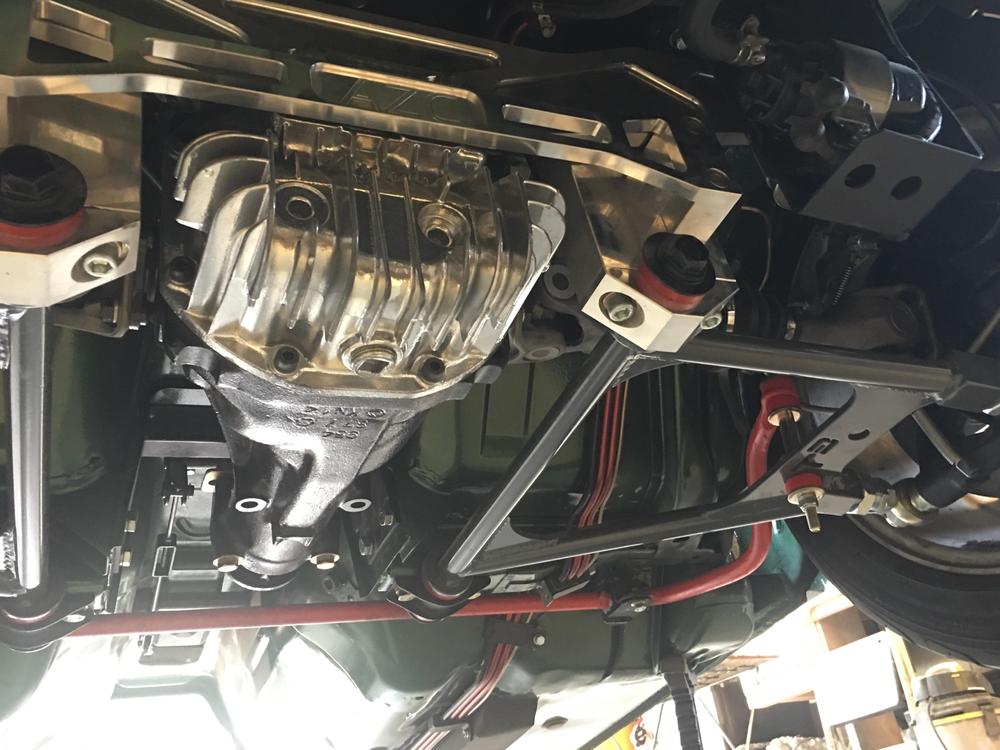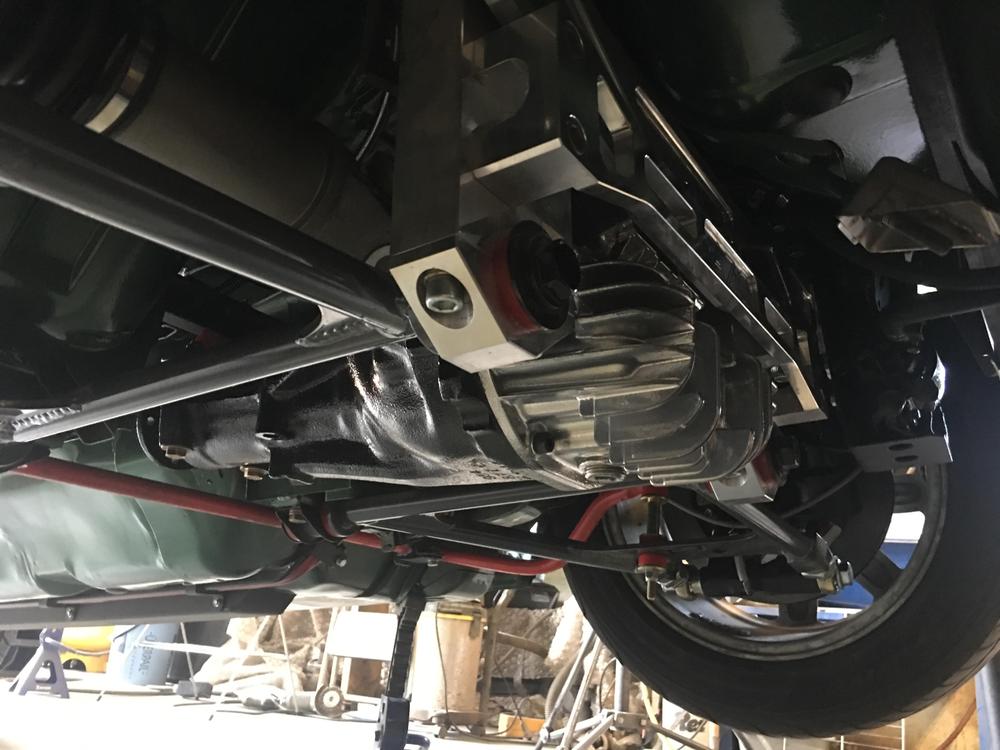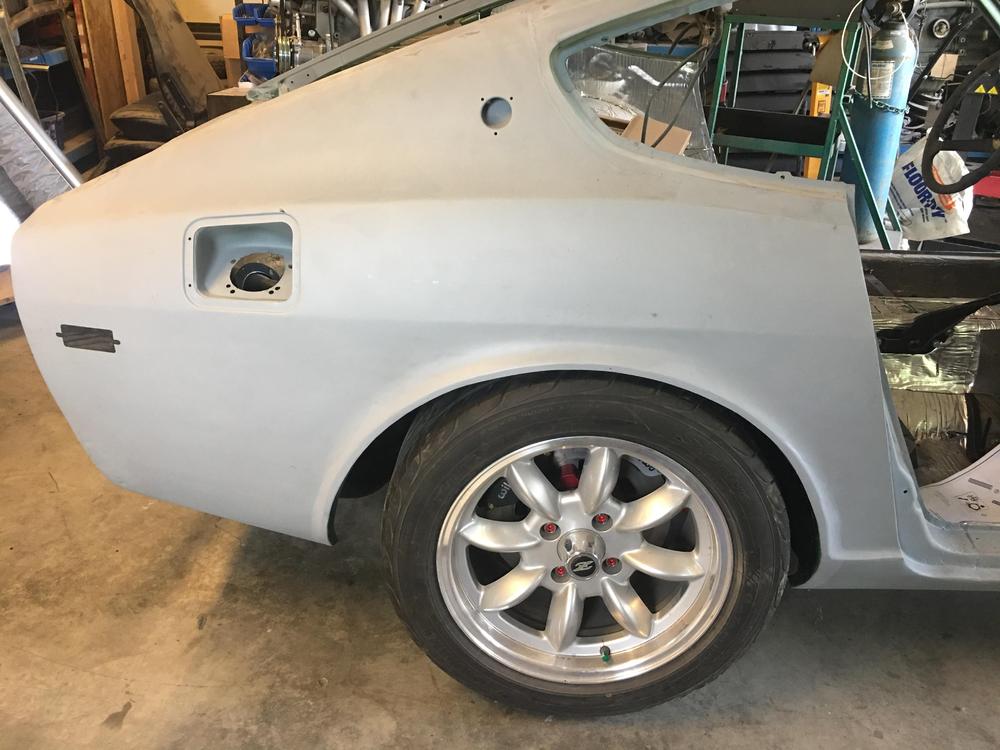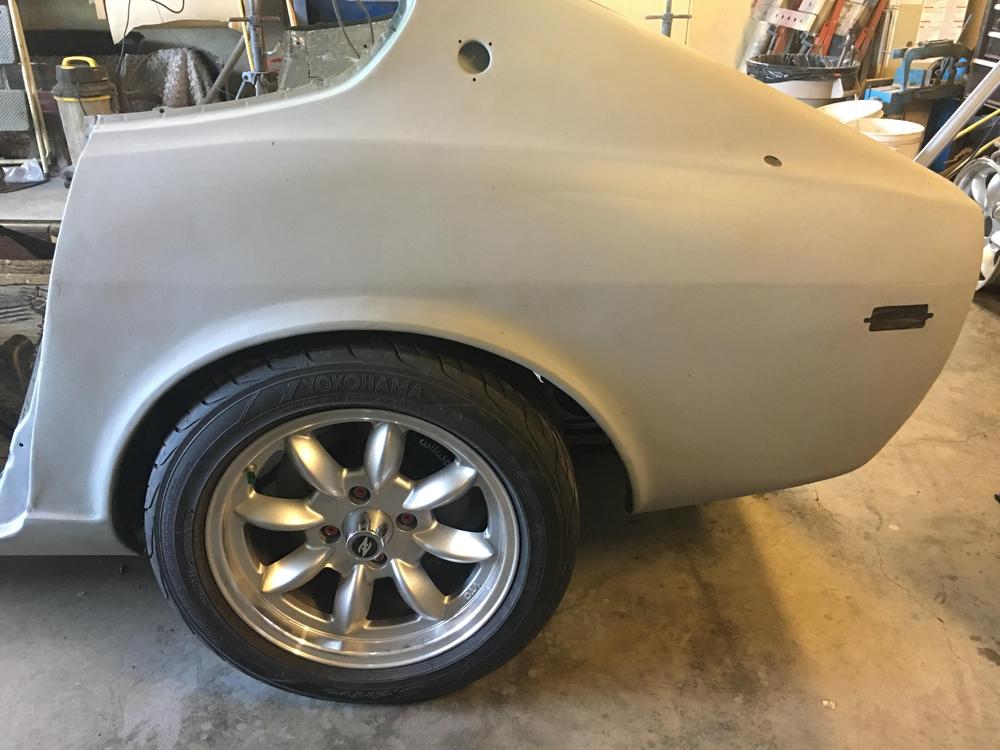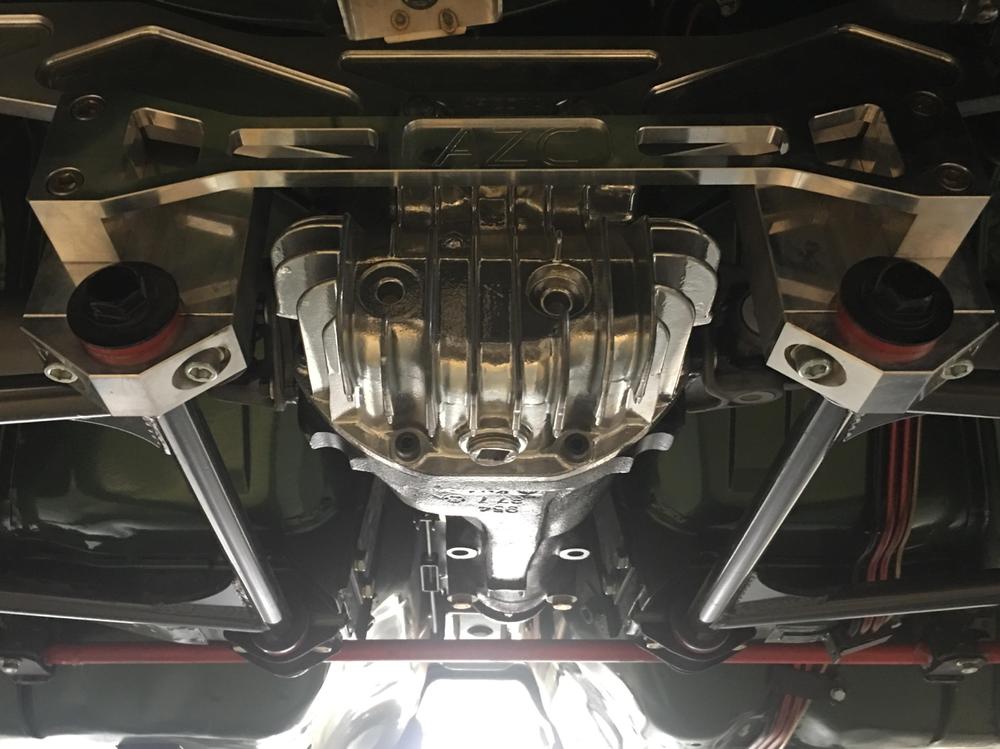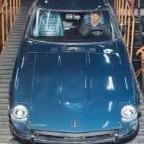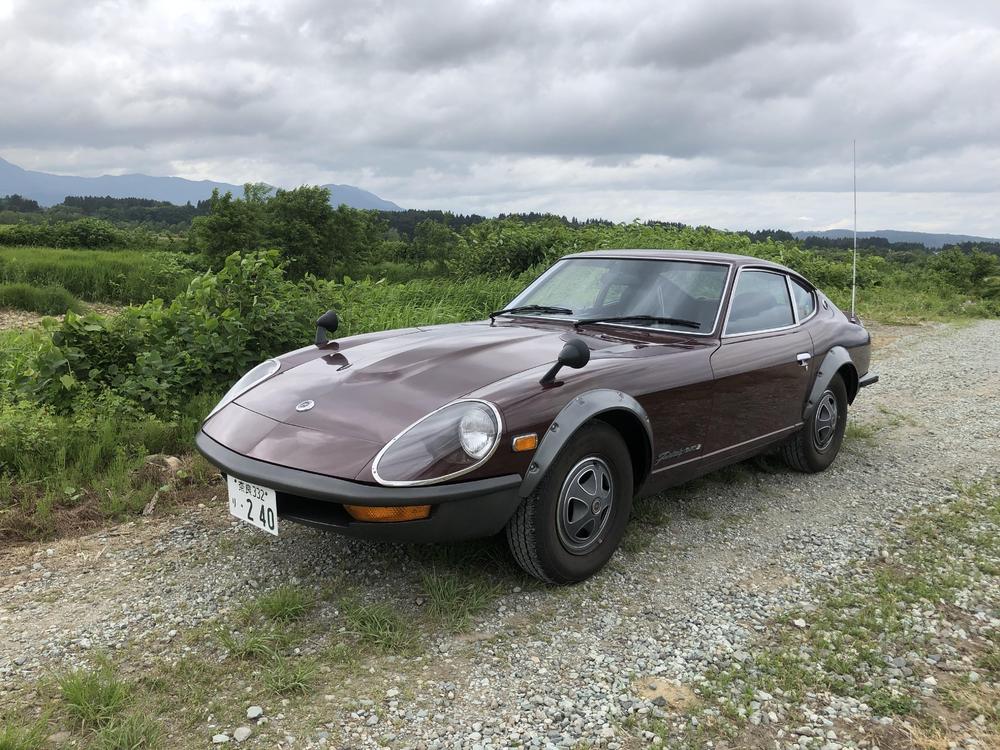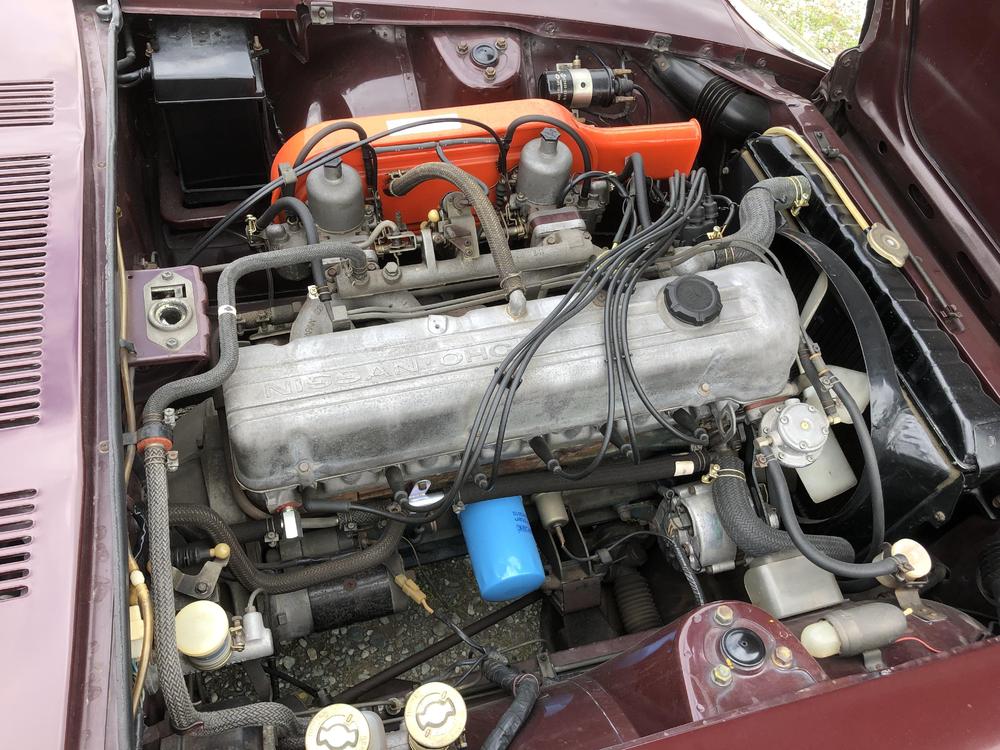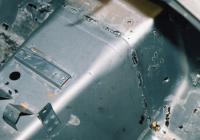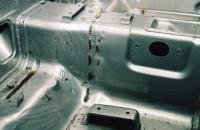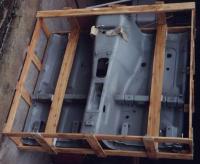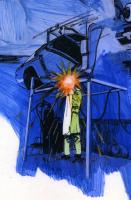The rubber piece for the '73 bumperette's is impossible to find. So, I figured I would order the earlier (70-72) bumperette rubber and see how that fit. Actually, it fit pretty well. The length of the rubber strip is exactly the same and the two end studs are also in the correct location for attachment. However, there are two center studs on early rubber and just one on the '73, and the locations are different. To make the early rubber work on the '73, I cut off one of the studs (The one that sits on top of the metal stud that attaches part to bumper) and drilled a hole in the bumperette where the other center stud would land. This worked very well and am pretty happy with the results.
I put in the last of the vinyl and panels (just a few final fasteners and rivets to install). I ended up going to the local auto upholstery shop to have them hem up the wheel well cover portion that had the missing hem. It took them just 10 mins and was cheap, $10. The vinyl was fairly easy to put in, the panels were again a challenge. The holes do not line up well. I will probably send a note of to the manufacturer, letting them know about this issue.
The new chrome vents came in.....thanks @Zup
I will pick up the last up my plating items today along with the fenders.
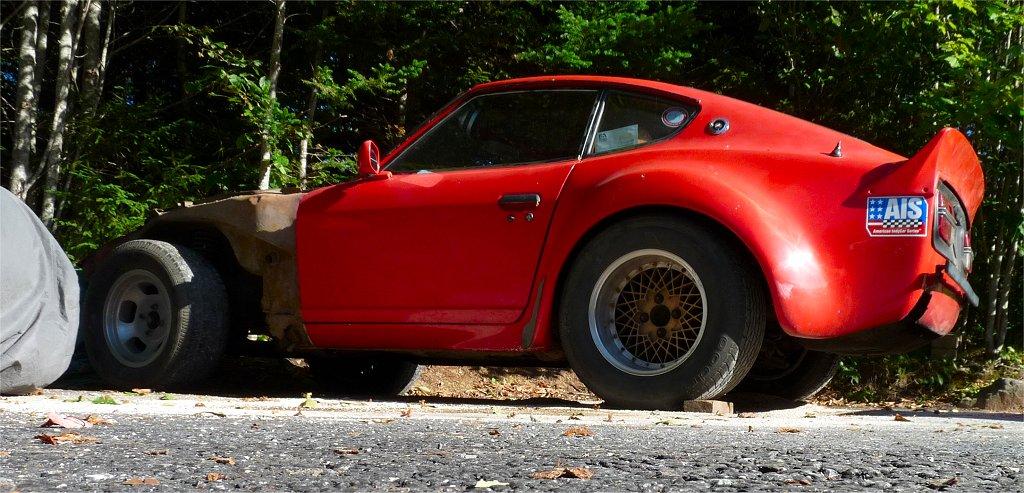
 Subscriber
Subscriber 3Points2,228Posts
3Points2,228Posts



